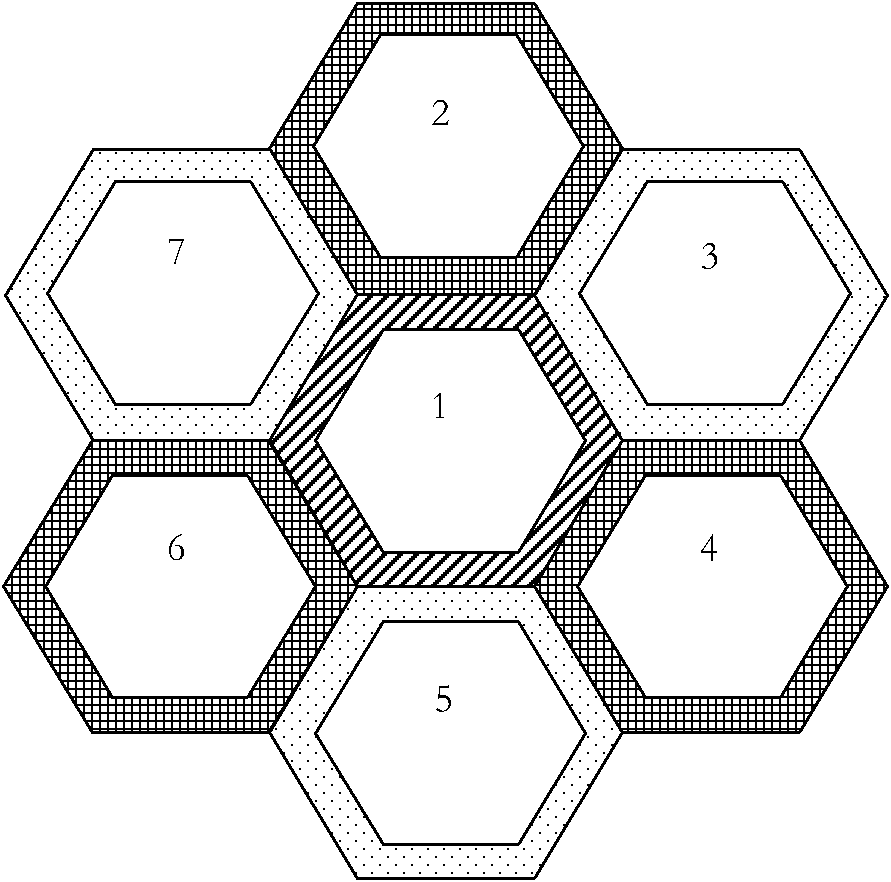Method and device for allocating CRS (Cell Reference Signal)
A cell-specific reference and configuration method technology, which is applied in the field of cell-specific reference signal configuration, can solve problems such as co-channel interference, and achieve the effects of reducing co-channel interference and improving downlink performance.
- Summary
- Abstract
- Description
- Claims
- Application Information
AI Technical Summary
Problems solved by technology
Method used
Image
Examples
example 1
[0064] In the first example, the transmission resources are divided based on the frequency domain.
[0065] The specific configuration process is as follows:
[0066] Assuming that the frequency band bandwidth of the LTE cell is 20 MHz, 100 RBs (Resource Block, resource block) are available, that is, 1200 REs. Conventional cyclic prefix (Cyclic Prefix, CP), the base station antenna is 2 antennas, and the maximum transmission power is 40W, which is 46dBm;
[0067] Before implementing ICIC, it is assumed that the reference power EPRE of the energy of a CRS single resource unit (CRS-RE) is 12dBm, and the ratio of the power of PDSCH-RE to the reference power of CRS-RE is set to 0dB, which is equal to 12dBm. In this way, PDSCH and the same The total power of the CRS of the symbol is: 12+10*Log1200=42.79dBm, which is less than the set maximum power of the cell 46dBm, and no power overload will occur;
[0068] Implement ICIC to divide the cell into a central area and an edge area. ...
example 2
[0074] In the second example, transmission resources are divided based on the time domain.
[0075] The specific configuration process is as follows:
[0076] Assuming that the frequency band bandwidth of the LTE cell is 20 MHz, 100 resource blocks (Resource Block, RB) are available, that is, 1200 REs. Conventional cyclic prefix (Cyclic Prefix, CP), the base station antenna is 2 antennas, and the maximum transmission power is 40W, that is, 46dBm.
[0077] If it is frequency division duplex (Frequency Division Duplex, FDD) LTE, there are 10 downlink wireless subframes (Sub Frame, SF) in a downlink wireless frame: SF0 ~ SF9, if it is time division duplex (Time Division Duplex, TDD) mode of LTE, assuming that the uplink and downlink configuration is 1, there are 6 downlink subframes in a wireless frame: SF0, SF1, SF4, SF5, SF6, SF9, and 4 uplink subframes: SF2, SF3, SF7, SF8. The following steps take FDD as an example (TDD downlink SF is less, and the implementation of time-do...
PUM
 Login to View More
Login to View More Abstract
Description
Claims
Application Information
 Login to View More
Login to View More - R&D
- Intellectual Property
- Life Sciences
- Materials
- Tech Scout
- Unparalleled Data Quality
- Higher Quality Content
- 60% Fewer Hallucinations
Browse by: Latest US Patents, China's latest patents, Technical Efficacy Thesaurus, Application Domain, Technology Topic, Popular Technical Reports.
© 2025 PatSnap. All rights reserved.Legal|Privacy policy|Modern Slavery Act Transparency Statement|Sitemap|About US| Contact US: help@patsnap.com



